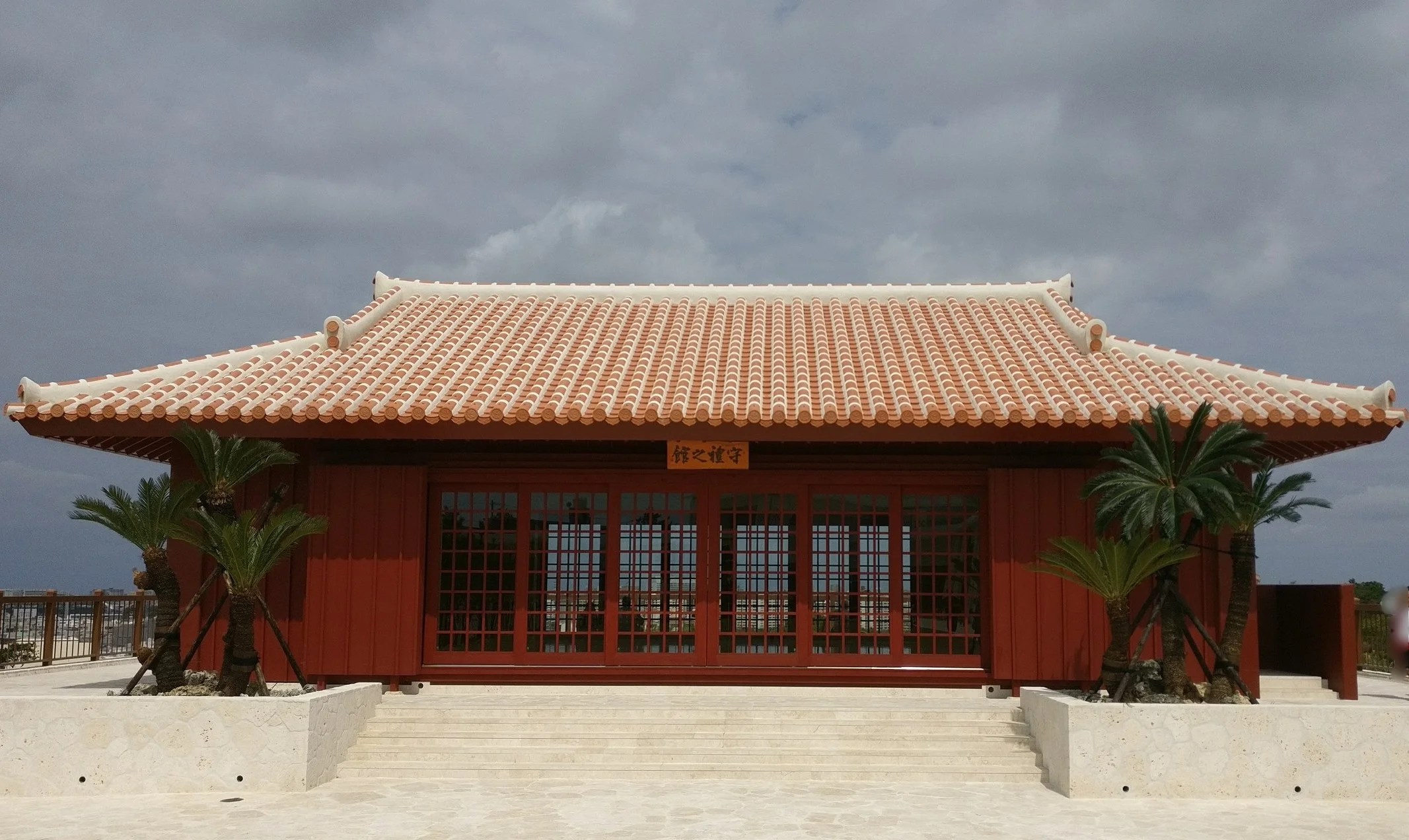
If you’ve commonly practiced Karate outside of Okinawa or Japan, like myself, you may be familiar with attending classes in a church hall, a gym hall space, a YMCA, a converted garage/spare room/ loft complete with floor and wall mats.
Some Dojo even including various eastern aesthetics such as hanging scrolls, shoji screens, gongs and ornamental weapons.
In my opinion, it doesn’t really matter where you train and what’s inside, so long as it adds value to your training.
What did I notice when coming to Okinawa and stepping inside the Dojo space?
First of all, you are always greeted by a pairing of Shisa – the guardian lion dogs of Okinawan tradition. After you remove your shoes, placing them neatly in the shelves provided, you step up onto the wooden floor, ranging from light pine to dark lacquered timber.
Next you notice the welcoming smile and greetings from the other Karateka, often you are greeted in either Japanese or English, with polite and sincere introductions.
Even now whilst in the middle of a kata, or when trying to eke out your 90th kick, everyone says hello to those entering the Dojo, new or familiar.
As you look around the walls you see a multitude of weapons, neatly (or not so) stacked in the corners, hanging from walls or kept in cupboards – Bo, Kama, Sai, Nunchaku, Sansetsukon, Tekko, sea turtle shells and small hand spears (the Tinbe) – and all within easy reach to simply go and try out – careful not to hit yourself, like I still do! There are makiwara, sometimes outside, standing sturdy and well whacked – inviting you to test your punching technique.
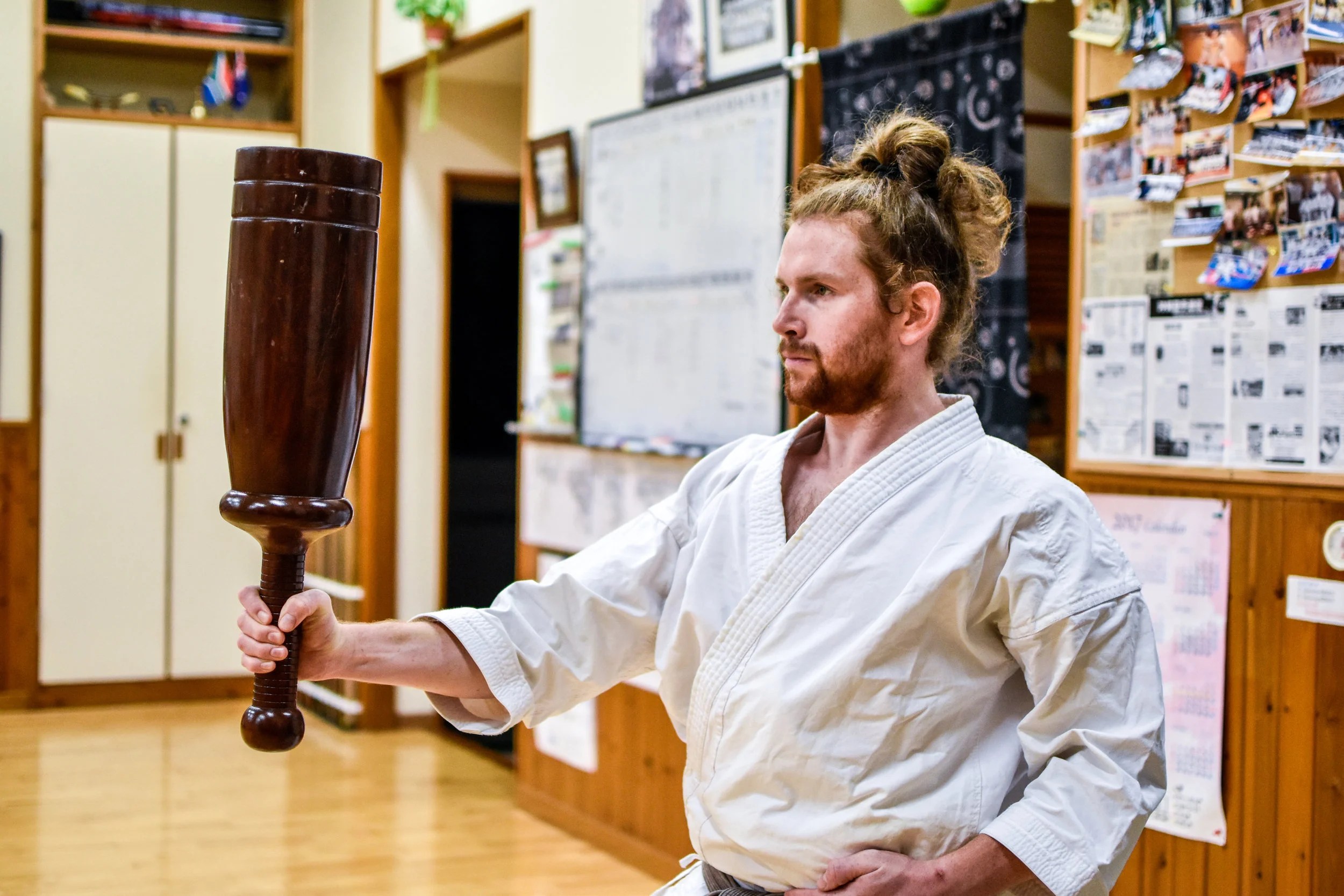
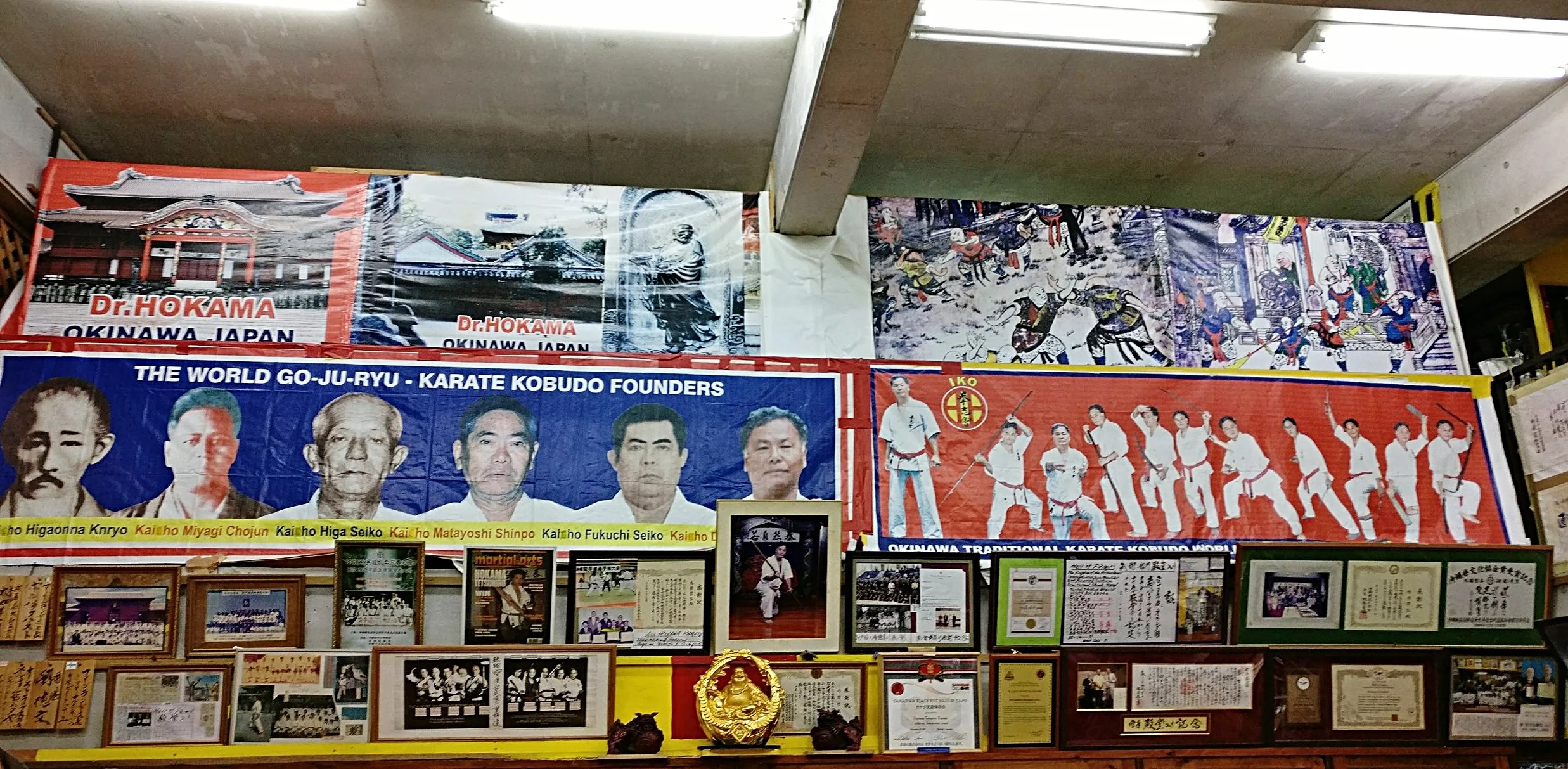
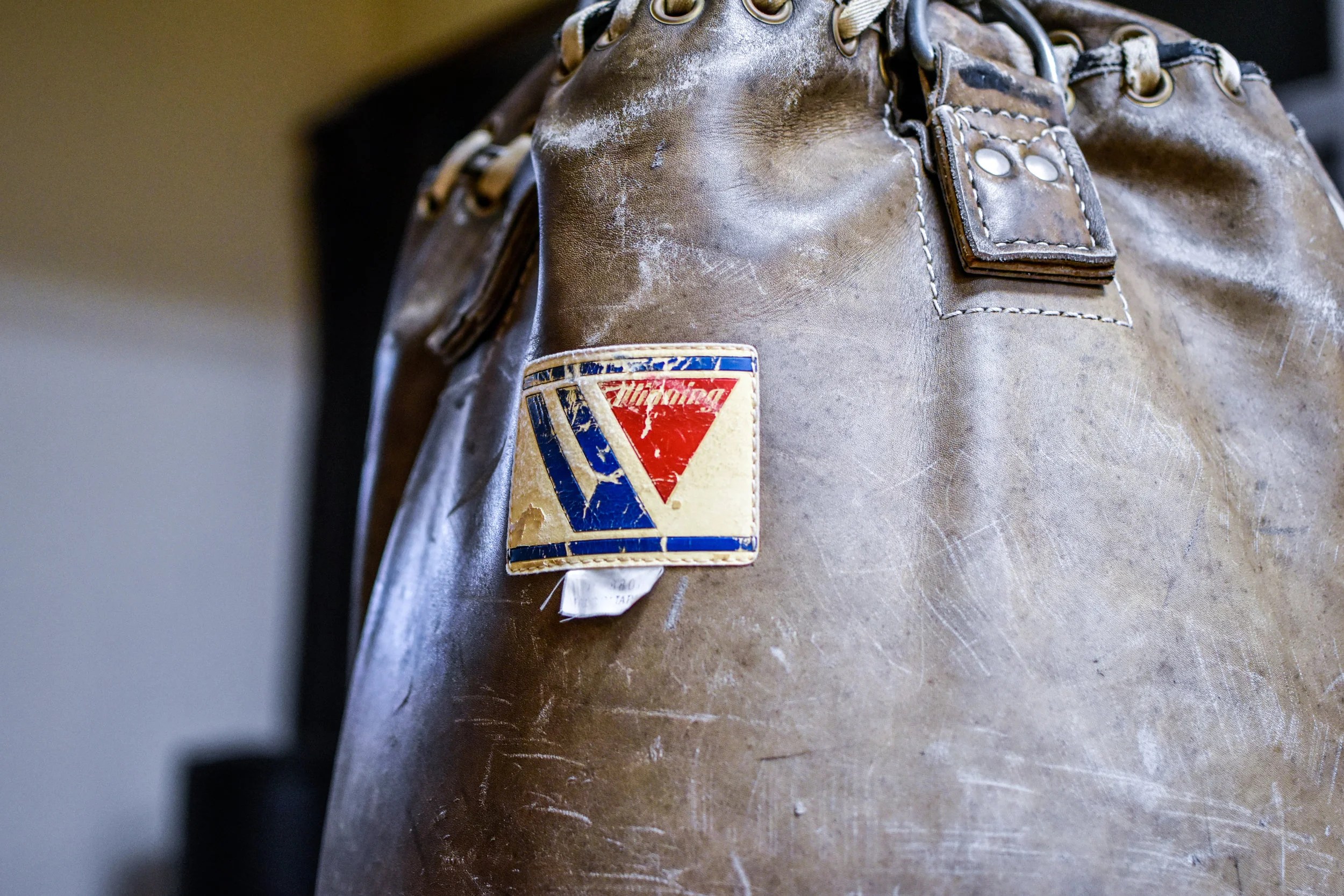
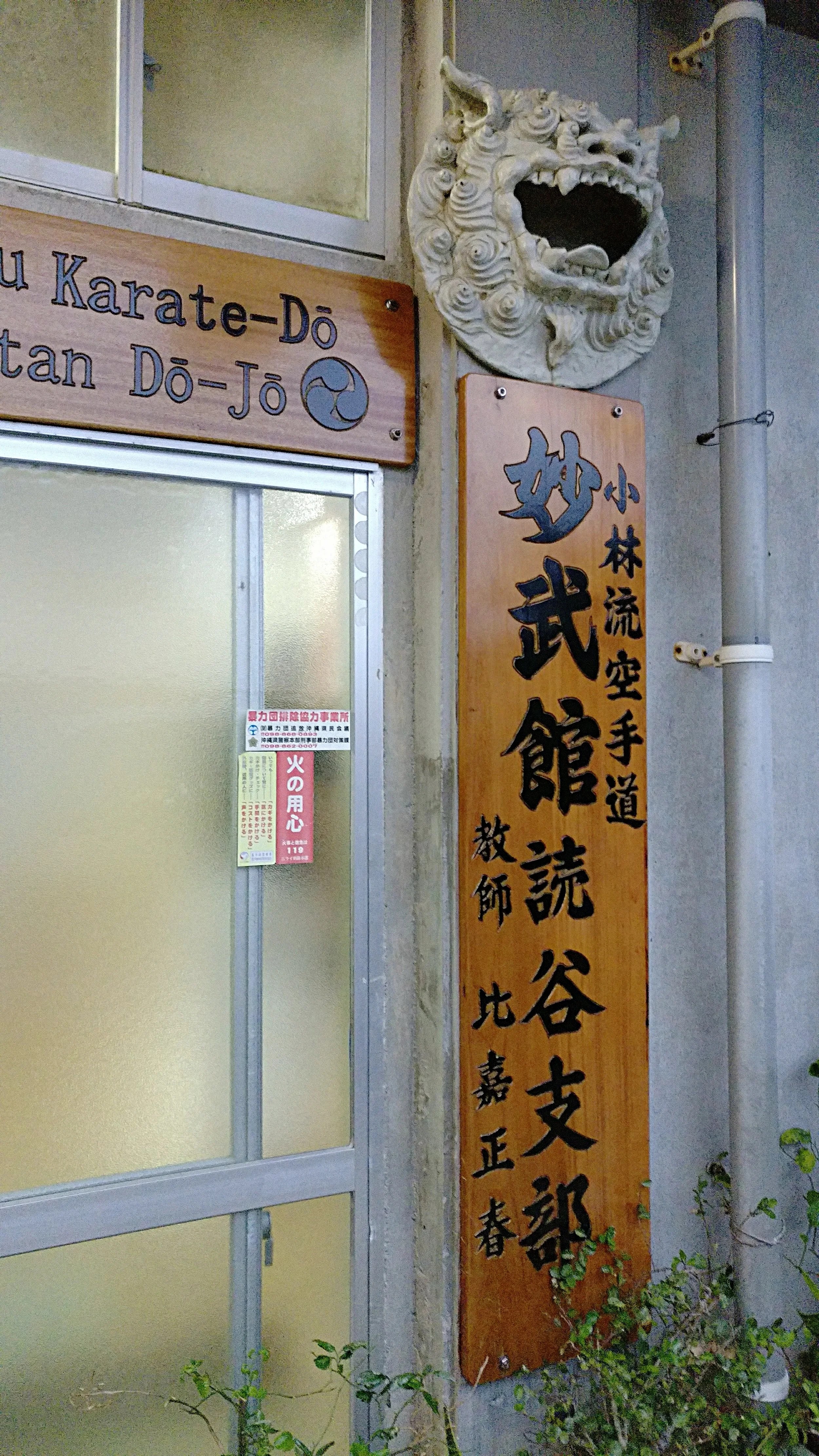
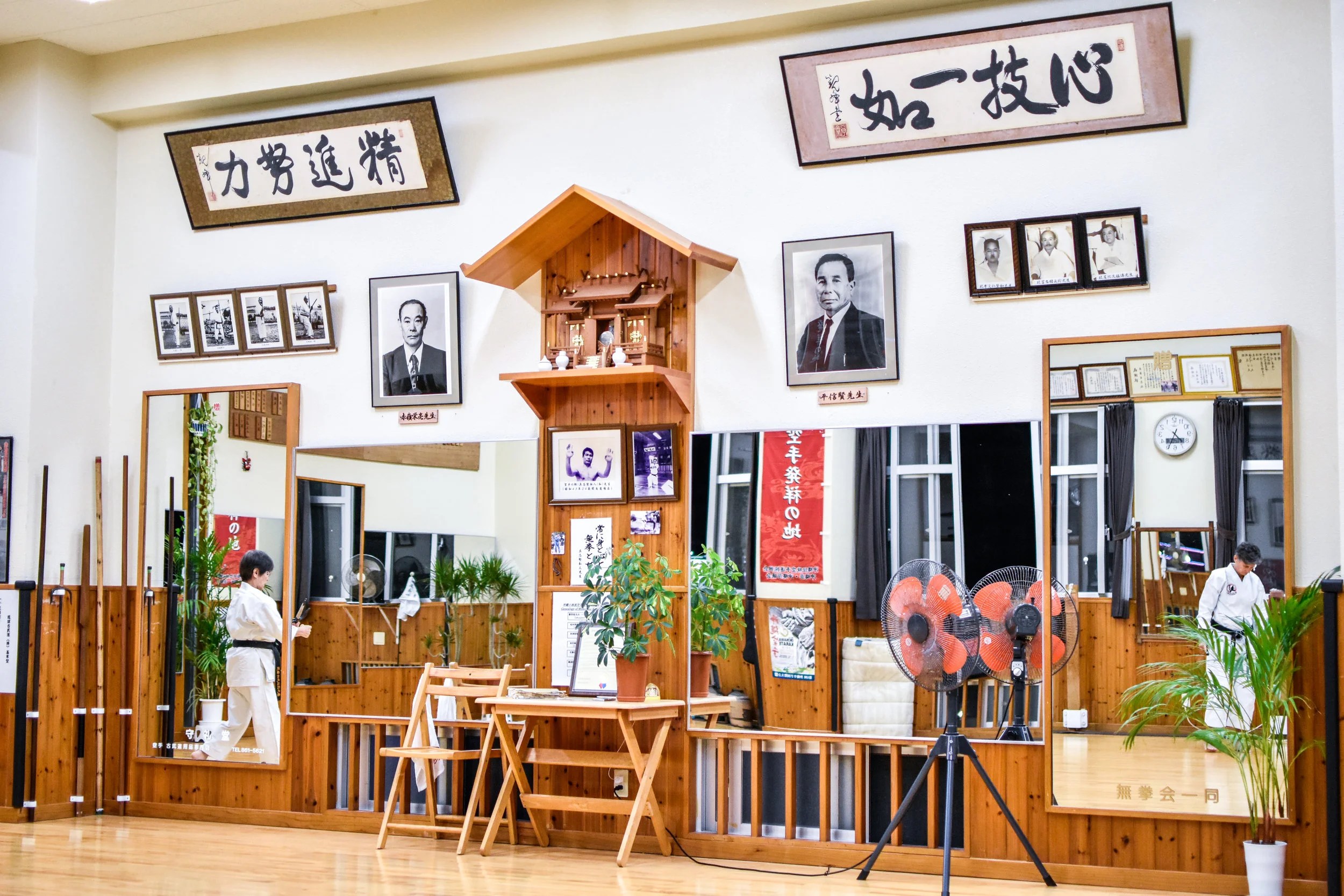
In the Shimbukan Hombu Dojo, the Shomen of the Dojo has a kamidana, prominent pictures of Taira Shinken and Eisuke Akamine Sensei, including two pieces of Shodo created by Eisuke Akamine. There are also pictures of Sensei that have shaped the practice that exists today.
To begin your training, you can take up some Dojo floor space or get stuck into the dedicated weights area, utilising the modern tools of Hojo Undo – dumbells, kettlebells, a barbell, hand grips, a heavy punch bag, and some interesting Indian Clubs, also known as Persian Meels, which can be used similarly to Chi Ishi in function.
There are of course more traditional Okinawan tools of Chi Ishi, Makiage Kigu, Nigiri Game and a heavy iron Bo to help you get those gainz.
To sum up, there is rarely any ornamentation that doesn’t add to the training or has relevance, there are a multitude of weapons and training tools to use and space to practice as you wish – your Sensei is there to provide those tools, to offer guidance and instruction – how you chose to use the Dojo is up to you.
If you are planning on taking a trip to Okinawa, or do you need a little guidance to help you decide then check out my Top 20 Tips available to Subscribers!!
Leave a comment